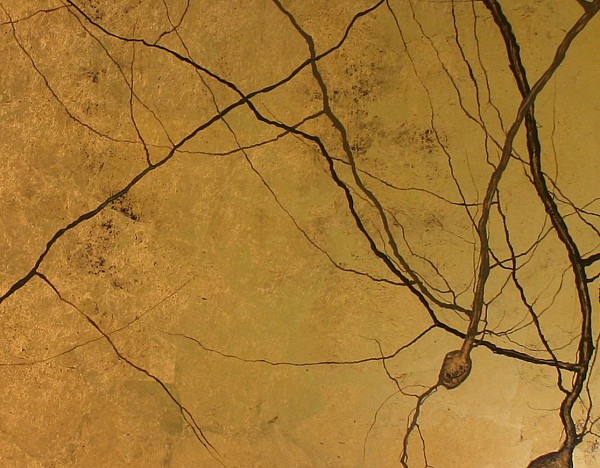Art has been a constantly evolving field and has taken advantage
of many different technologies and innovations that humanity has developed over
the centuries. With all of the developments in technology you can get lost in
it all. Technology has given artist the ability to look into what makes the
human body so beautiful and complex.
The brain is a great representation of how the body can be a
work of art. The brain has millions of small connections initiated by neurons.
The neurons and synapses of the brain when looked at can be overlooked for
their complexity. The art that is represented in the following picture is a
coloring of neuron connections in the brain and the art that is represented jus
tin the human brain, this beauty could only be seen through the technological advances
that neuroscience has invested in. Neuro science has given humans the ability
to understand on our own level the complexity of the human brain, like Penrose
says in “Consciousness Involves Noncomputable Ingredients” the brains noncomputational
actions occur at the bridge from the quantum to understanding of quantum
mechanics and these quantum actions are the reason for why the brain can multitask
so efficiently as opposed to only being able to do one action at a time. The
human brain works like a multiprocessing processor that can handle complex
loads at a time.
Image Sources:
Works Cited
Digital image. N.p., n.d. Web.
<http://neuroscience.gsu.edu/files/2014/01/neuroscience-feature-art.jpg>.
Digital image. N.p., n.d. Web.
<https://www.geeksaresexy.net/wp-content/uploads/2011/09/UCSD_purkinjes_closeup-600x468.jpg>.
Digital image. N.p., n.d. Web.
<http://tradingcomputers.us/wp-content/uploads/2015/10/intel-core-i7-2617m.jpg>.
Works Cited
"Home USC Undergraduate Neuroscience Program USC Dana
and David Dornsife College of Letters, Arts and Sciences." Home USC Undergraduate Neuroscience Program
USC Dana and David Dornsife College of Letters, Arts and Sciences. N.p.,
n.d. Web. 16 May 2016. <http://dornsife.usc.edu/usc-neuroscience/>.
"How to Build a Bigger Brain." UCLA Newsroom. N.p., n.d. Web. 16 May
2016.
<http://newsroom.ucla.edu/releases/how-to-build-a-bigger-brain-91273>.
NASA. NASA, n.d. Web. 16 May 2016. <http://www.nasa.gov/>.
"Research." -
Neuroscience Institute. N.p., n.d. Web. 16 May 2016.
<http://neuroscience.gsu.edu/research/>.
"Swann's Hypothesis." N.p., n.d. Web.
<http%3A%2F%2Fwww.nytimes.com%2F2007%2F11%2F04%2Fbooks%2Freview%2FMax-t.html>.
"The Third Culture - Chapter 14." The Third Culture - Chapter 14. N.p.,
n.d. Web. 16 May 2016.
<https://www.edge.org/documents/ThirdCulture/v-Ch.14.html>.



I like how you use the brain as your subject. its something I think people often overlook and might not think of as a work of art. Its ability to control our bodies through neuron connections is fascinating. Its interesting to think of ourselves as the piece of art in this case, but I think that the brain is a great example.
ReplyDeleteI loved your picture in your blog! They went well with your background. I also agree that the brain is a great representation of how the body can be a work of art. I thought that was a really cool argument!
ReplyDeleteI loved your picture in your blog! They went well with your background. I also agree that the brain is a great representation of how the body can be a work of art. I thought that was a really cool argument!
ReplyDelete